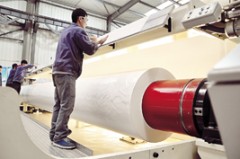Application
Where do you get titanium dioxide from?
Have you ever wondered where the magical ingredient, titanium dioxide, comes from? This versatile compound plays a vital role in countless industries, from cosmetics to food, plastics to paints.
This brilliant white pigment boasts exceptional light-scattering properties, making it a sought-after additive in various applications. It provides opacity, brightness, and UV resistance, lending a touch of magic to everyday products.
The primary source of titanium dioxide is the naturally occurring mineral known as rutile. Rutile deposits are found worldwide, with substantial reserves in countries like Australia, South Africa, and Sierra Leone. Mining companies extract rutile ore from these deposits, kick-starting transforming it into titanium dioxide.

Processing Rutile: From Ore to Titanium Dioxide
Once the rutile ore is extracted from the earth, it undergoes a series of intricate processes to extract titanium dioxide.
Ore Extraction: The mining process involves digging up rutile-rich rocks and separating the ore from surrounding materials.
Ore Concentration: Next, the extracted ore undergoes concentration to increase the titanium dioxide content. Various methods, including gravity separation and magnetic separation, are employed to achieve this.
Chemical Processing: In this step, the concentrated ore is subjected to chemical reactions to extract pure titanium dioxide. The most common method is the chloride process, where the ore is reacted with chlorine gas to produce titanium tetrachloride.
Purification: Titanium tetrachloride is then purified, typically through fractional distillation, to remove impurities and obtain high-purity titanium dioxide.
Crystallization: The purified titanium tetrachloride is hydrolyzed, leading to the formation of titanium dioxide crystals. These crystals are then calcined at high temperatures to obtain the final product in the form of white powder.
Through this intricate process, rutile ore is transformed into titanium dioxide, ready to be utilized in an array of industries.




